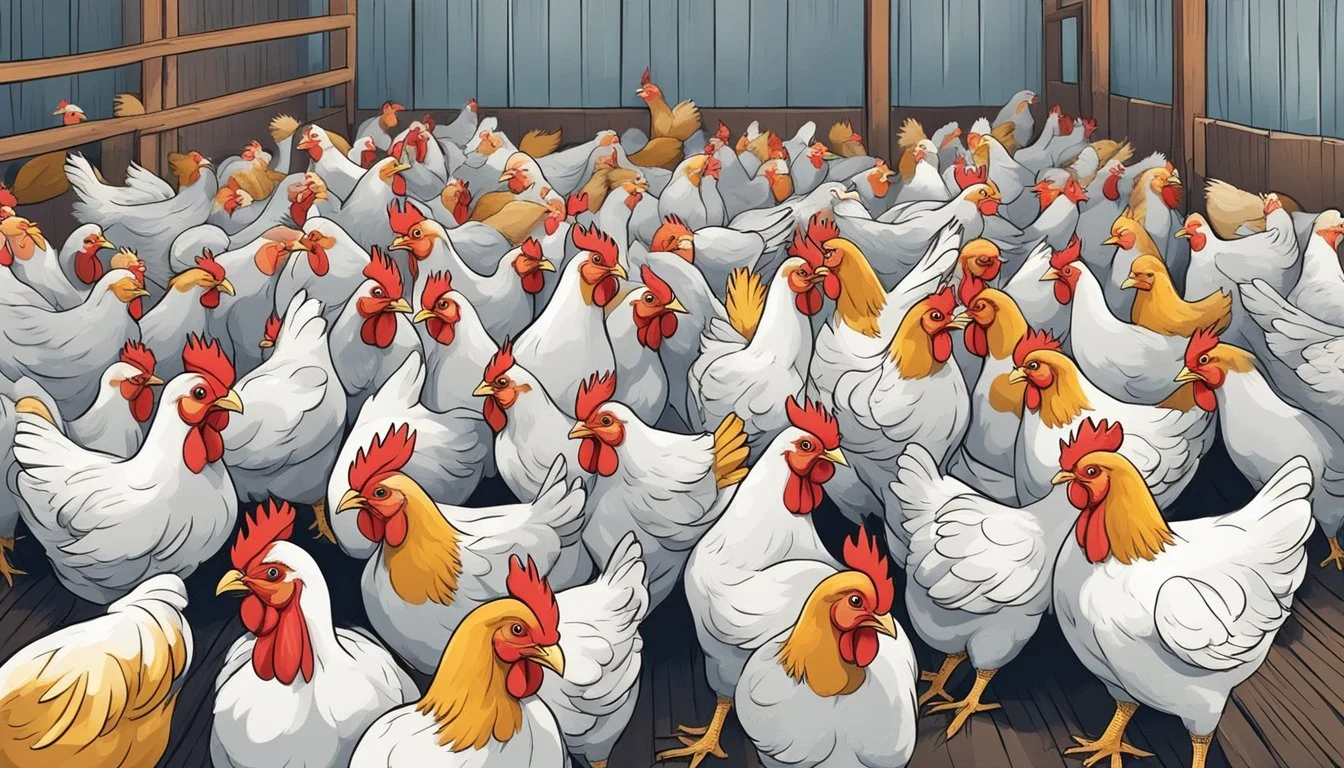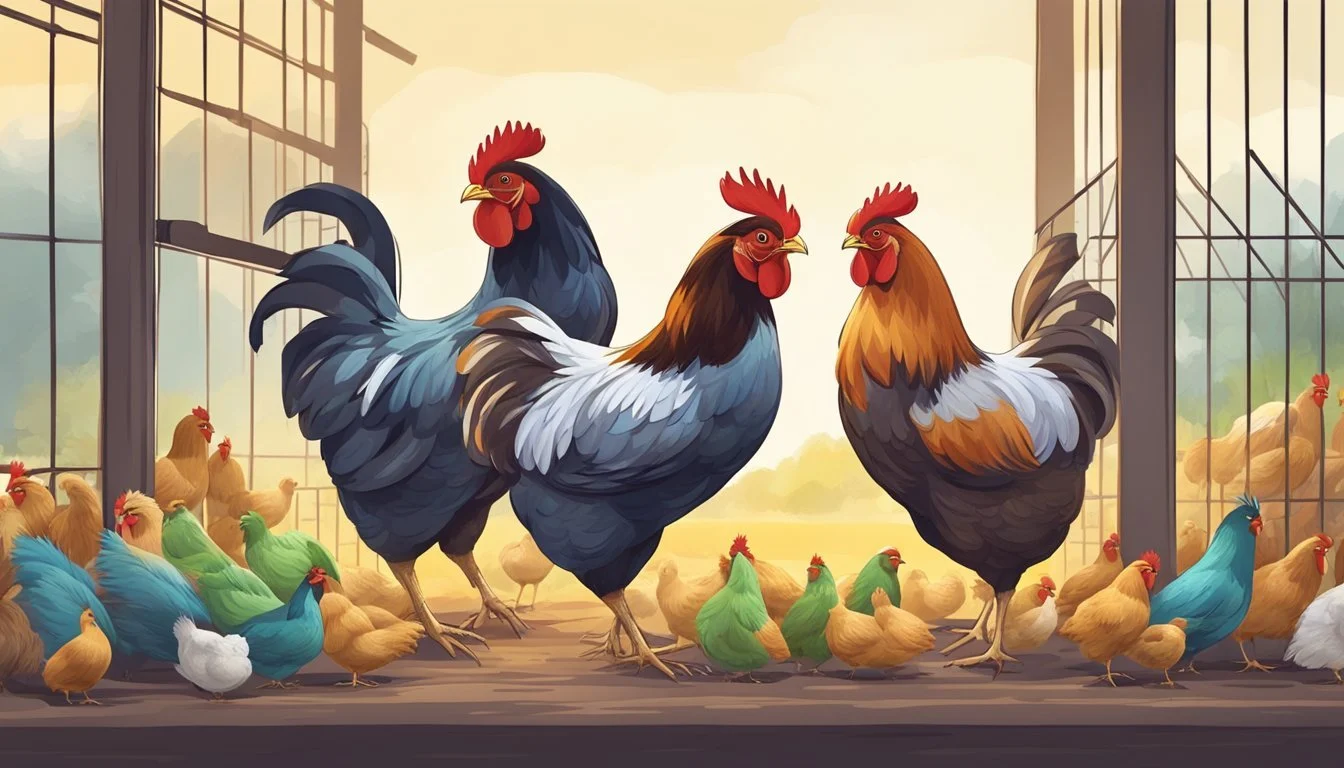How to Manage Chickens with Feather Pecking Issues
Effective Strategies
Feather pecking is a common behavior among chickens that can lead to distress within the flock. This unwanted behavior often stems from stress, boredom, or environmental factors. When a chicken engages in pecking the feathers of others, it not only harms the recipient leading to potential injuries and infections but may also impact the overall well-being and productivity of the flock. To manage this issue, it is essential to understand the underlying causes and implement strategies aimed at minimizing stress and improving the quality of life for these birds.
Effective management of feather pecking involves creating an environment that encourages natural behaviors while reducing triggers that can lead to this harmful activity. This may include modifications to the coop and run to allow for more space, as chickens are less likely to peck when they are not overcrowded. Additionally, providing enrichment such as fresh litter or foraging opportunities can alleviate boredom and reduce feather pecking. It is crucial to monitor the flock for signs of illness or injury, as sick or injured chickens may become targets for peck
Understanding Feather Pecking
Feather pecking is a behavioral problem in chickens characterized by birds pecking at the feathers of flock members, which can result in various health and social issues. Addressing this problem requires an understanding of its causes and the ability to recognize the signs.
Causes of Feather Pecking
Boredom: Chickens lacking mental stimulation or physical activities may resort to feather pecking as a form of entertainment.
Overcrowding: Lack of space can increase stress and aggression, leading to pecking.
Nutritional Deficiencies: Inadequate levels of protein or other nutrients can cause birds to peck at feathers in search of sustenance.
Parasites: The presence of parasites can irritate chickens, prompting them to peck at themselves or others.
Stress Factors: Changes in the environment, such as temperature fluctuations or loud noises, can induce stress-related pecking.
Social Dynamics: An established social hierarchy can lead to aggression and feather pecking among lower-ranking hens.
Genetics: Some breeds are more predisposed to this behavior due to selective breeding and genetic factors.
Identifying the Signs of Feather Pecking
Feather Loss: Noticeable bare patches or missing feathers, particularly around the tail and wings.
Injuries: Look for signs of injury such as blood, skin injuries, or irritated areas on the hens.
Behavioral Changes: Increased aggression or alterations in normal behavior may indicate issues within the social hierarchy or other stressors leading to feather pecking.
Improving the Coop Environment
To minimize feather pecking among chickens, creating a comfortable and stimulating coop environment is crucial. Attention to space needs and environmental enrichment can promote healthier, less aggressive behaviors in the flock.
Creating Adequate Space and Design
Chickens require enough space to avoid overcrowding, which can lead to stress and aggressive pecking. An adequate chicken coop provides at least 3 to 4 square feet per chicken inside the coop and 8 to 10 square feet per chicken in an outdoor run. Design elements such as multiple perches at different heights cater to their instinct to roost and allow lower-ranking chickens to escape from aggressors.
Space requirements:
Indoor coop: 3-4 sq ft/chicken
Outdoor run: 8-10 sq ft/chicken
Environmental Enrichment Strategies
Introducing environmental enrichment can greatly reduce stress and boredom, leading to a decrease in feather pecking. Toys, such as hanging treat dispensers, encourage foraging behavior and curiosity. Providing dust baths is essential for chickens to clean themselves and is a natural, enjoyable activity for them. Further, rotating access to different areas, like frequently rotated pasture, ensures adequate stimulation and foraging opportunities.
Enrichment options:
Toys: Hanging treat dispensers, pecking blocks
Dust baths: Accessible areas with fine dirt or sand
Foraging: Safe access to varied outdoor environments
Treats: Scatter treats to encourage natural foraging behavior
Changing Diet and Nutrition
Managing feather pecking in chickens often involves adjusting their diet and nutrition to address deficiencies that may be contributing to this behavior. A proper balance of nutrients, including adequate protein and essential minerals, can help in preventing feather pecking.
Ensuring a Balanced Diet
Chickens require a diet rich in protein to support feather growth and overall health. Protein is crucial, as feathers are made of keratin, a type of protein. A lack of sufficient protein or the amino acids that make up protein can lead to feather pecking as chickens try to satisfy their nutrient needs. Farmers should aim to provide a high-quality commercial feed formulated for the specific type of chicken, whether they are layers or broilers. Depending on the bird's stage of life, it should contain about 16-20% protein content for layers and 22-24% for broilers, along with other essential nutrients.
Supplementing Nutrients to Prevent Pecking
Certain minerals and vitamins play a role in reducing stress and aggressive behavior, including feather pecking. It’s beneficial to supplement chickens' diets with necessary nutrients known to mitigate pecking issues:
Sodium and phosphorus are important minerals that, when deficient, can lead to abnormal behaviors, including pecking.
Supplements like methionine, an amino acid, can be added especially if natural foraging is not sufficient.
Providing a balanced diet with the right supplements is a strategy aimed at preventing feather pecking in flocks. Additional care must be taken to ensure all chickens have equal access to food, as competition can also contribute to pecking behavior.
Addressing Social Behaviors
Chickens naturally establish a pecking order to maintain harmony within the flock. Properly managing this behavior is essential in addressing issues such as feather pecking which can result from disruptions in social hierarchy.
Managing Flock Dynamics
To ensure a stable flock hierarchy and reduce feather pecking, it's crucial to introduce new chickens gradually. This can prevent sudden disruptions in the existing social structure. Observing how the chickens interact during introduction can provide insights into the social dynamics of the flock, allowing for timely intervention if necessary. When dominance issues arise, consider reorganizing the flock to balance the social order. Utilizing strategies from "Understanding Chickens' Pecking Behavior and Social Dynamics", can be beneficial in mitigating aggressive behavior. Moreover, ensuring the presence of a rooster can sometimes help in maintaining order, as they naturally take on a leadership role within the flock hierarchy.
Reducing Stress and Aggression
Stress and aggression in chickens can lead to unwanted behaviors like feather pecking. Address these issues by minimizing common stressors such as overcrowding, overheating, and lack of resources. Each chicken should have ample space to forage and rest to prevent frustration and bullying. Techniques to reduce stress and aggression often include ensuring access to enough food and water stations to prevent competition and enhancing the coop with perches and nesting boxes to accommodate the natural behaviors of different breeds. Temperature control within the coop can help prevent overheating, a notable stressor that may increase aggression and exacerbate feather pecking issues.
Implementing Preventive Measures
To manage feather pecking in chickens, it's crucial to implement preventive strategies that address both environmental factors and bird well-being. Ensuring routine care and utilizing anti-pecking products can help curtail this detrimental behavior.
Routine Care and Monitoring
Regular observation of the flock is essential to prevent feather pecking. Quickly identifying and isolating affected chickens helps minimize stress and injuries within the coop. Frequent inspections for external parasites like mites and lice are also critical as they can exacerbate pecking behaviors. Consulting a veterinarian should be considered if pecking persists despite these measures.
Weekly checks for parasites.
Immediate separation of targeted birds.
Observation for signs of stress or aggression.
Effective Use of Anti-Pecking Products
Integrating anti-pecking sprays can be an effective deterrent for feather pecking. These products usually have a bitter taste, discouraging chickens from pecking at each other. Additionally, providing ample space and resources such as feed, water, and perches can reduce competition and aggression, cornerstones in preventing pecking from occurring.
Application of safe, non-toxic sprays as a deterrent.
Sufficient space per chicken to alleviate social stress.
By implementing a consistent routine of care and incorporating protective products, keepers can significantly reduce and prevent pecking issues in their flocks.
Responding to Feather Pecking Incidents
When responding to instances of feather pecking amongst chickens, immediate care for injured birds and a thorough assessment of the root causes are critical to effectively manage the issue.
Treating Injured Chickens
In the wake of a feather pecking incident, it's crucial to immediately separate the injured chicken from the flock to prevent further harm. Inspect the chicken for open wounds or signs of distress, and apply appropriate treatment. Minor injuries may often be treated on-site with disinfectants and wound care, whereas more severe cases should be brought to the attention of a veterinarian for professional care. Strategies found effective are establishing an infirmary pen for recovery and keeping the environment stress-free to avoid exacerbation of injuries and additional pecking attacks.
Identifying and Addressing Underlying Causes
Addressing feather pecking necessitates a deep dive into the potential underlying causes. Behaviors leading to pecking can be stimulated by stressors such as overcrowding, insufficient resources, or a lack of foraging opportunities. To deter such behavior, ensure that the flock size is manageable and that the chickens' housing is conducive to their well-being. This means providing ample space, perches, and access to a varied and nutritious diet. Adding resources for natural behaviors, such as dust baths or sufficient fresh litter for foraging, can be instrumental in reducing boredom and stress. Look out for vent pecking in laying hens, a behavior that specifically targets the vent area and can lead to severe injuries or death if unchecked. Implementing environmental enrichments and monitoring flock dynamics are part of a comprehensive approach to managing and mitigating feather pecking.



